Classroom Stars

10 Creative Writing Activities to Spark Magic in Your KS2 Primary Classroom
- 12 Jun 2024

Keeping KS2 pupils engaged with writing can sometimes feel like wrangling a roomful of kittens. But fear not! This blog post is here to reignite the writing fire with ten exciting activities that will have your learners crafting captivating stories, persuasive arguments, and beautiful descriptions in no time.
In the age of instant messaging and short-form content, nurturing a love for expressive writing is more important than ever. These activities cater to various learning styles and interests, while sneakily reinforcing key literacy skills like vocabulary development, sentence structure, and creative thinking. So, grab a pen, gather your pupils, and get ready to unleash their inner wordsmiths!
Now, let’s dive into the 10 activities and explore how they can spark magic in your classroom:
Picture Prompts Find captivating images online or in old magazines. Historical scenes, fantastical landscapes, funny animals, or even abstract shapes all work well. Project the image on the board or provide individual copies. Give children a set amount of time to study the image and jot down any thoughts, ideas, or emotions it evokes. Then, have them write a story inspired by the image. Encourage them to consider the setting, characters, plot, and mood based on their observations.
Character Interviews This activity helps develop well-rounded characters with strong voices and personalities. Have pupils brainstorm character ideas – they could be historical figures, fictional heroes, or even everyday people with interesting jobs. Once they’ve chosen a character, learners can write a list of interview questions to get to know them better. What are their hopes and dreams? What are their biggest fears? Finally, children write the interview itself, embodying the voice of their character in their responses.
Setting Showdown This activity challenges pupils to adapt their writing style and vocabulary to fit different environments. Choose two contrasting settings – a bustling city square at rush hour versus a deserted island paradise, or a spaceship hurtling through space compared to a cozy cottage nestled in a forest. Have learners write a story that takes place in both of these contrasting settings. This could be a single character experiencing both environments or two separate stories linked by a common theme.
Sentence Swap This is a fantastic activity to show learners the power of sentence structure and word order. Write a short paragraph on the board, with several sentences. This could be the opening of a story, a news report, or a descriptive passage. Challenge children to swap the sentences around in different orders. Have them read the paragraph aloud after each swap to see how it changes the flow and meaning of the text. Discuss as a class how sentence order can build suspense, create emphasis, or simply improve the rhythm of the writing.
News Flash! This activity brings historical events or fictional scenarios to life and helps children with factual writing and research skills. Present learners with a historical event they might not be familiar with (the invention of the printing press, the eruption of Mount Vesuvius) or a fictional headline from a fantasy world ( “Dragons Take Over Local Bakery!”). Have pupils research the event or brainstorm the details of the fictional scenario. Then, have them write a news report on the event, complete with a catchy headline, factual information, and quotes from “witnesses” (real or imagined).
Poetry in Motion This activity is a wonderful way to bridge the gap between visual imagery and written language. Show pupils a short video clip that is particularly evocative or visually stimulating. This could be a nature documentary scene, a silent movie chase sequence, or even an abstract animation. After watching the clip, give learners some time to think about what they saw and how it made them feel. Then, have them write a poem capturing the essence of the video clip. Encourage them to use vivid language, figurative speech, and sound devices to bring their poem to life.
Dear Diary… This activity is a fantastic tool for character development and creative storytelling. Ask children to choose a historical figure, fictional character, or even an inanimate object (a tree in the schoolyard, a forgotten toy in the attic). Have them write a series of diary entries from the perspective of their chosen subject. These diary entries should reflect the character’s thoughts, feelings, and experiences. For historical figures, pupils can research real diaries or letters to guide their writing.
The Persuasion Game This activity hones persuasive writing skills and encourages pupils to think critically about different viewpoints. Give learners a product, idea, or policy (flying cars, a four-day school week, uniforms in school) and have them choose whether they are for or against it. Then, have them write a persuasive letter arguing their chosen viewpoint. This letter should be addressed to a specific audience (e.g., the government, parents). Pupils should use strong arguments, factual evidence, and persuasive language to convince the reader of their point of view.
Comic Strip Capers This activity is a fun and engaging way to introduce learners to graphic novels and comic book storytelling. Provide pupils with a simple comic strip template, with a set number of panels. Challenge them to write a short story using illustrations and dialogue within the panels of the comic strip. This can be a humorous story, a dramatic scene, or even a factual account of a historical event.
Six-Word Stories This activity is a fantastic challenge for creative thinking, conciseness, and impactful writing. Challenge children to write a complete story in just six words! This forces them to think carefully about their plot, characters, and setting, and to deliver their message in an impactful way. Six-word story prompts can be provided to get pupils started (e.g., “Lost princess finds happy robot friend”, “Last human wanders through ruined city”).
Remember, the key is to make writing fun, engaging, and relevant to your children’s interests. With a little creativity, you can transform your classroom into a vibrant writing workshop where imaginations soar, and words truly come alive!
If you liked this post, you may like Beyond the Classroom Walls: 15 Outdoor Learning Activities for Key Stage 1 .
More articles

Beyond the Classroom Walls: 15 Outdoor Learning Activities for Key Stage 1

Unlocking the Secrets of Great Teaching: Famous Teacher Quotes and Their Insights for Educators

12 Primary Activities and Ideas to Celebrate Earth Day in Your Classroom

10 Art and Craft Activities and Ideas for Primary Schools

Unlocking the Magic: Ten Classroom Ideas and Activities to Celebrate St. Patrick’s Day in Primary Schools

Challenging Times: A Primary School Teacher’s Tale of Dealing with a Difficult Senior Leadership Team
Liked this read.
Why not be in the loop and sign up to our newsletter? You’ll receive all the latest educational news, teaching and learning ideas, and heartfelt stories that we post on our blog.
Access all of our resources
Classroom Stars is proud to support incredible teachers just like you. Why not become a member and gain access to ALL of our primary resources for your classroom?
You have subscribed to our newsletter!
You have joined the list to receive our newsletter! Be sure to look out for all our latest resources, news and reads from our blog.
Access this AI tool and lots more for just £9.95 per year
New password created
Your new password has been created. A confirmation email has been sent to you.
Check your email
We have sent you an email with a link to create a new password.
Remember to check the junk folder in case the link was sent there.
Your message has been received
Thank you for getting in contact with us! A member of our team will do their best to get back to you as soon as possible.
Request for school membership received
Thank you for providing us with your details. A member of our team will get back to you as soon as possible with the next steps.
Email address updated
Your email address has been updated. A confirmation has been sent to your previous email address.
Download your free resource pack
Thank you for joining the list to receive our newsletter! Click below to download your free sample resource pack.
Your privacy
We use cookies to improve your experience and our website. By continuing to use Classroom Stars, you agree to our usage of cookies, as defined in our Privacy Policy .
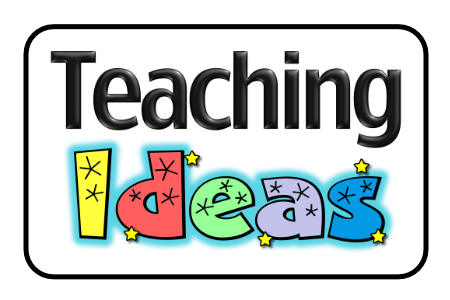
Creative Writing Ideas
Here are some ideas that you can use as part of creative writing activities with your children:
1) Writing Traditional Stories from a Different Point of View
Read “The True Story of the Three Little Pigs” (by Jon Scieszka) with the children. This tells the “Three Little Pigs” story from the wolf’s point of view.
Ask the children to think of a story that they know well and to write another version from another point of view.
e.g. Write “Cinderella” from the point of view of one of the ugly sisters,
OR Write “The Three Billy Goats Gruff” from the point of view of the troll,
OR Write “Goldilocks and the Three Bears” from the point of view of Goldilocks.
2) Design a New Room for the Chocolate Factory
Based on “Charlie and the Chocolate Factory” by Roald Dahl.
Remind the children of the story and read chapter 15 – a description of the Chocolate Room.
Ask the children who have read the story if they can think of any of the other rooms in the factory. Make a list of these on the board for the children to refer to later.
Now ask the children to make up a new room for the chocolate factory, making sure that they are as descriptive as possible.
Jessica Miller has also suggested the following idea:
What might have happened if any of the other children had gotten the factory?
3) Missing Person
The following activity is great fun and usually produces great results, but it must be used with caution. Only try it with a class you are comfortable with and who you think will cope with the situation. Also, try to add a little humour where possible, ensuring that the children are aware that it’s not real – you’re just pretending!
Choose a name for a missing person (e.g. “Paul”), making sure that this is not the name of someone in the class. Before the lesson, put a chair in an empty space in the classroom. For the purposes of the lesson, pretend that this space is where “Paul” normally sits.
Ask the children where “Paul” is. They will probably look at you as though you are mad, but continually ask them where “Paul” is today. Tell them that he normally sits in his space (point to the empty chair) and that he was there yesterday, but he isn’t there today. Insist that they tell you where he is. Hopefully, someone will make up a reason why “Paul” isn’t in today. Argue with them, saying that you have heard differently. Ask if anyone knows anything else. Ask who was the last person to see him. Continue like this for a while, with the children explaining where he is.
Finally, say that as Paul is missing, we will have to make some missing person posters, explaining who Paul is (with a picture so others can identify him!), where he was last seen and who to contact if he is found. When these are made, you could post them around the school.
A missing person poster template can be found below.
4) Supermoo’s New Adventures
Based on the book “Supermoo” by Babette Cole.
Read the story through with the children. Discuss the main characters (Supermoo, Calf Crypton, the BOTS, Miss Pimple’s class), and ask the children to produce a new adventure for a series of new Supermoo books. This could be in the form of a story, or a storyboard with accompanying pictures.
When finished, the children could actually make the books for younger children in the school to read.
5) Recipes for Dreams
Based on “The BFG” by Roald Dahl.
Remind the children of the story and read the “Dreams” chapter to give the children some ideas. Ask them to make a recipe for a dream. They could set it out like a cooking recipe with ingredients and mixing instructions and there should also be a short description of the dream (which could be a “Golden Phizzwizard” or a “Trogglehumper”).
When all of the recipes are finished, they could be made into a “Dream Recipe Cook Book”.
6) Dr. Xargle’s Book of …..
This activity is based on the Dr. Xargle series of books written by Jeanne Willis and illustrated by Tony Ross.
Read through some of the books in the series.
The children should write their own Dr. Xargle story in which he teaches his class about a different aspect of Earth life (e.g. school, work). This will encourage them to look at everyday life from a different point of view. If there is enough time, they could also make illustrations to accompany their text.
7) Class Mascot Activity
Find a small soft toy or puppet which will become the class mascot. With the class, choose a name for the mascot, and discuss its background (where it comes from, its friends and family, its likes and dislikes etc.).
Let each child take the mascot (and a book in which to write) home for a few days at a time. While they are looking after the mascot, they should write a short story in the book outlining what the mascot has done during its stay with them. This can be true or the children can make up events (e.g. a trip to the moon). Encourage them to be as creative as possible.
When the mascot returns to school, spend some time discussing what it has done and where it has been. The class could make a book describing the mascot’s travels.
8) When I am famous…
“In the future, everyone will be famous for 15 minutes” – Andy Warhol
Discuss the above quote with the children, and talk about what it means to be famous. Would they like to be famous? What would they like to be famous for?
The children could then write:
- An account of what they would like to be famous for and why.
- A diary, written as if the child was famous in the future. How are they feeling? What things do they have to do?
- A newspaper interview, written as if in the future, with the child who is now famous.
9) How did the elephant get its trunk?
Can the children think of a story which describes how the elephant got its trunk? Or how about explaining how a giraffe got its long neck? How did the leopard get its spots? Why has a rabbit got long ears? Why is a zebra stripy?
10) Description of a New Animal
A good way of asking children to use their descriptive writing skills is to ask them to invent a new animal. Ask them to describe what it looks like, where it lives, what it does, what it eats etc. It might be useful to discuss existing animals and their characteristics beforehand.
11) Writing a story based on adverts
In the back of many books, there are often adverts for other stories. Why not get the children to choose one of these adverts, and write a story based on the description of the story in the advert. They don’t need to have read the book which is being advertised, and you can get them to compare their own story to the real version when they have finished.
12) Using Objects
Take 4 or 5 unrelated but interesting objects and challenge children to create either a skit or a character description of the owner. Great for oral discussion but also useful for character analysis. Suggested by Jane Knight.
13) Name Characters
This is using art and creative writing, and was suggested by Jeanette Carpenter:
- Fold a piece of paper in half and on the fold line, write your name.
- Cut around the outside shape of your name.
- Open your name and you will have a shape based on your letters.
- Colour and design your shape into a character.
- Glue your finished character to a piece of construction paper.
- Write a descriptive paragraph about your character as if it is an alien arriving here on earth for the first time. Give it a name, place of origin, the reason for being here, etc.
Writing Detailed Instructions
You may also like, lined paper templates, bookmark slogans, fronted adverbials starters, olympic poem, fill in the punctuation, ways to use lego in the classroom, leave a comment cancel reply.
Save my name, email, and website in this browser for the next time I comment.
Join our Newsletter
Get new teaching ideas and resources in your inbox every week!
FREE EMAIL UPDATES!
Mighty Writer Blog
7 techniques for generating story writing ideas in ks2, key stage 2 is a great time for children..
Typically, they will have settled into the flow of learning new subjects, and as KS2 teachers you get to help them flourish by practising, repeating and refining their learnt skills. When it comes to teaching literacy this also means encouraging your class’s creativity.
However, on occasion creativity can be hard to come by and story writing lessons might not produce the outcomes you were hoping for. To help you combat this, here are some techniques and ideas to help you inspire your class with creative writing tasks.
1. Create a Classroom Story Generator
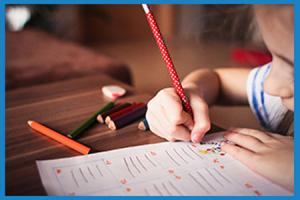
Write the ideas on paper and cut them out, then fold them up so you can’t see what’s written on them.
Find three bags (or any kind of container). Place all the folded character ideas in the first bag, the scenes in the second and the situations/tasks in the third. Ask each pupil to come up and draw a folded piece of paper from each bag. This will be the start of their story. Alternatively, you could build up five story-starting sentences from the bags and write them on the board. Your class could then choose which story they want to write.
Here are some examples to get you started:
| Character | Scene | Situation / Task |
| A Pirate | A Sunny Beach | Searching for their friend |
| A Talking Cat | A Ship at Sea | Longs for an adventure |
| An Elephant | School at Night | Is scared of thunder |
| An Alien | A Snowstorm | Wants to learn to fly |
| A Fairy | A Haunted House | Finds a stray dog |
You can tailor the ideas to suit your pupils’ abilities, age and preferences, which should really help to spark their imaginations.
2. Watch or Listen
It doesn’t have to be long or have any dialogue, but showing a short film to your class may help to trigger inspiration. Luckily there are literally millions of free videos available for this kind of thing. Vet them first to make sure they are completely suitable for your class, then turn down the lights and press play. You can show the video more than once, maybe asking the children to write notes on the second viewing which will help to inspire their stories.
Alternatively try playing a piece of instrumental music and ask your class to imagine what might be happening. Write their ideas and thoughts on the board and ask them to use this as the inspiration for a story.
3. Folklore and Fairy Tales
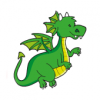
4. Storyboards
You’re not asking your class to be artists; they can use simple stick figures and words to get their ideas down on paper. But asking your class to draw out their ideas will help them generate some interesting story twists. By getting the structure of their stories down on paper in a sequence, they will know the beginning, middle and end of their stories so when they come to start writing it out there’s not an ounce of KS2 writers block in sight!
5. A Newspaper Clipping
Newspapers can be a huge source of inspiration. Interesting or unusual stories can be cut out and stuck into a scrap book to bring out and show your class in times of creative need! Alternatively, you could show your whole class a newspaper clipping and ask them all to write a story about the same extract.
6. Rewrite A Known Story
Rewriting a known story with a different ending or a different character is a great way to generate inspiration. This technique for generating story ideas can’t fail to produce results since the possibilities are endless!
For example:
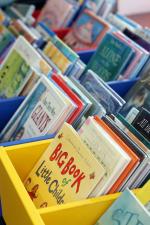
- What if Little Red Riding Hood lived in a jungle instead of a forest?
- What if the three little pigs were the three little wolves instead, and the big bad pig wanted to eat them for his dinner?
- What if Hansel and Gretel were actually the bad ones and wanted to eat the old lady?
- What if you asked your class to swap the characters in one story with the characters in another – Snow White and the Magic Beans, Jack and the Seven Dwarves. Let your class’s imaginations run free and look forward to reading the end results!
7. Let the Children Choose
Set some homework for the children to go away and think of something they care about, something they are interested in, something which makes them happy, sad or angry and why that is. You could ask them to find a picture or a news story themselves which sparks their interest or emotion.
From the ideas generated at home, ask them to write a story in class. Passion is a wonderful muse after all, so if the children choose a topic that they really care about you should end up with some very good results!
How Can Mighty Writer Help?
If you want to take your pupils' writing skills to the next level, consider using Mighty Writer. This innovative resource is designed to make writing fun and engaging for young learners, while also developing their core literacy skills. With Mighty Writer, your pupils will love writing and you'll love the results!
Want to learn more about the Mighty Writer resource? Download our free Teachers Guide by clicking the link below!

Mighty Writer uses cookies to improve your experience. This includes necessary cookies to interact with the website, anonymous analytical data, and some third party cookies. For a complete list and further options please see our Cookie Policy .

Crafting Creative Writing
Switch to our new english teaching resources.
Slide decks, worksheets, quizzes and lesson planning guidance designed for your classroom.
Play new resources video
Lesson details
Key learning points.
- In this lesson, we will use all our knowledge from the previous lessons on sentences to look at how we create our own stories. We will start by thinking about different genre choices.
This content is made available by Oak National Academy Limited and its partners and licensed under Oak’s terms & conditions (Collection 1), except where otherwise stated.
5 Questions
Lesson appears in, unit english / paragraphing narratives for clarity, using possessive pronouns, using apostrophes accurately, structuring, writing and editing genre-specific narratives.
Visit Puffin.co.uk

- Search Field
- Picture Books Packs
- Colouring Sheets
- KS1 English
- Bumper Book Packs
- Explore Empathy
Jacqueline Wilson
- Book Club Questions
- Lit in Colour
- Activity Ideas
- Writing Prompts
- Story Makers Shows
- Virtual Visits
- Inspiration
Home > Resources > KS2 RESOURCE PACK: Creative Writing with Jacqueline Wilson
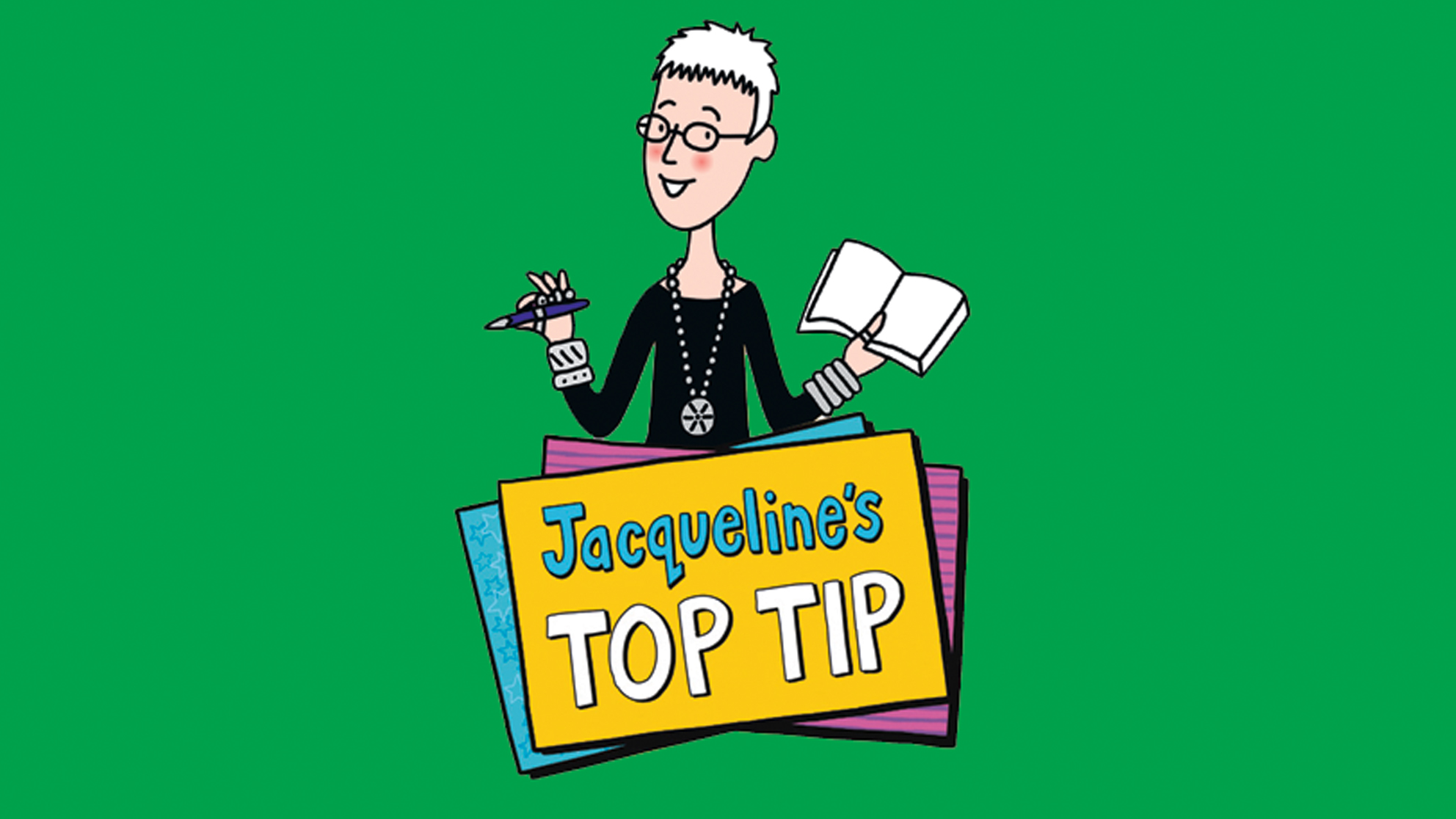
KS2 RESOURCE PACK: Creative Writing with Jacqueline Wilson
Key stage and subjects, what’s the story.
Jacqueline Wilson has written over 100 books – so now it is over to you! This pack includes creative writing advice from Jacqueline Wilson, broken into five sections so you can create your story over a series of lessons.
This resource pack includes:
Lesson 1: Big ideas
- Individual warm-up
- Setting the scene
Lesson 2: creating characters
- Small group warm-up: freeze frame 3d characters
- Character wheels
Lesson 3: the beginning – starting a story
- Warm-up: classroom adventure
- Analysing the opening of ‘my mum tracy beaker’
Lesson 4: The middle – making something happen
- Discussion warm-up: fairy tale problems
- Solving problems
- Storyboarding
Lesson 5: The end – finishing the story
- Small group warm-up: film trailers
- Completing a plot graph The final touches
Work sheets
- Story hat ideas
- Storyboard template Plot graphs
Get the KS2 RESOURCE PACK: Creative Writing with Jacqueline Wilson
Related books, four children and it, my mum tracy beaker.
Jacqueline Wilson, Nick Sharratt
The Get Creative Journal
Jacqueline Wilson, Nick Sharratt (Illustrator)
Who makes Puffin Schools?
Tag on the top needs the closed class if you start as expanded, leave data-collapsed="false" attribute, its used in the css --> puffin schools has been created by the children’s publisher puffin to help bring together all the inspiring content we create for schools into one place. fa-angle-down--> what ages are the books on puffin schools for, tag on the top needs the closed class if you start as expanded, leave data-collapsed="false" attribute, its used in the css --> the books on this website will range from those for eyfs through to primary and up to lower secondary school. you can discover our full range of books at puffin.co.uk fa-angle-down--> what is puffin, tag on the top needs the closed class if you start as expanded, leave data-collapsed="false" attribute, its used in the css --> puffin is an imprint of penguin random house, the world’s number-one publisher representing a vibrant community of publishing houses marked by unparalleled success. through our world of stories, puffin aims to open up the world to every child. our mission is to inspire children to feel they can be and do anything, and to create readers for life. puffin started out as a non-fiction publisher, with its first title appearing in 1940. as the most iconic and well-known children’s book brand in the uk today, we are always on the lookout for innovative ways to tell the world’s favourite stories and for brilliant new debut talent and brands that connect with today’s young readers, from newborn up to twelve years old. we publish a diverse and wide range of fiction, non-fiction, picture books and children’s classics. our list includes some of the world’s favourite authors, illustrators and licensed brands, such as eric carle, helen oxenbury, nadia shireen, the snowman, doctor who, roald dahl, tom fletcher, jeff kinney, rick riordan, robin stevens, and jacqueline wilson to name but a few. fa-angle-down--> what’s the connection between ladybird, puffin and penguin, tag on the top needs the closed class if you start as expanded, leave data-collapsed="false" attribute, its used in the css --> ladybird, puffin and penguin are imprints of penguin random house uk. across their extensive list, we believe there is a story for every child, everywhere. you can find information about books for all ages at penguin.co.uk fa-angle-down--> where can i buy puffin books from, tag on the top needs the closed class if you start as expanded, leave data-collapsed="false" attribute, its used in the css --> all the books featured on this website can be purchased in the usual way: as well as being available on the high street and online, you can find lots of brilliant offers via school-specific suppliers and wholesale retailers. fa-angle-down--> how do i get in contact with a member of the puffin schools team, tag on the top needs the closed class if you start as expanded, leave data-collapsed="false" attribute, its used in the css --> whether you’ve got a brilliant idea for a lesson, a photograph of something incredible you’ve done at your school or just have a question, please email [email protected] and a member of the team will get back to you as soon as possible . fa-angle-down--> what’s happened to puffin virtually live, tag on the top needs the closed class if you start as expanded, leave data-collapsed="false" attribute, its used in the css --> the story-makers show was known as puffin virtually live up until march 2019. the content and ambition of the show remains the same: to give every pupil the opportunity to engage with authors and illustrators in their own classroom using the power of the internet. we’ve re-named puffin virtually live so that it’s easier for new teachers to discover it as part of puffin schools and to acknowledge that the show now premieres on show day, rather than being streamed live. fa-angle-down--> what’s happened to my puffin virtually live account, tag on the top needs the closed class if you start as expanded, leave data-collapsed="false" attribute, its used in the css --> your account for puffin virtually live has been deactivated as it is no longer a feature of the puffin schools website. if you were registered for the newsletter, you will now receive the puffin schools newsletter, which is filled with all the latest information about accompanying resources and upcoming shows. if you do not wish to receive it any longer then please unsubscribe. fa-angle-down--> which video platform is the story-makers show hosted on.
- Primary Hub
- Art & Design
- Design & Technology
- Health & Wellbeing
- Secondary Hub
- Citizenship
- Primary CPD
- Secondary CPD
- Book Awards
- All Products
- Primary Products
- Secondary Products
- School Trips
- Trip Directory
- Trips by Subject
- Trips by Type
- Trips by Region
- Submit a Trip Venue
Trending stories
Top results.

- Creative Writing Ks2 Using The Dramatic Imagination
Creative writing KS2 – using the dramatic imagination
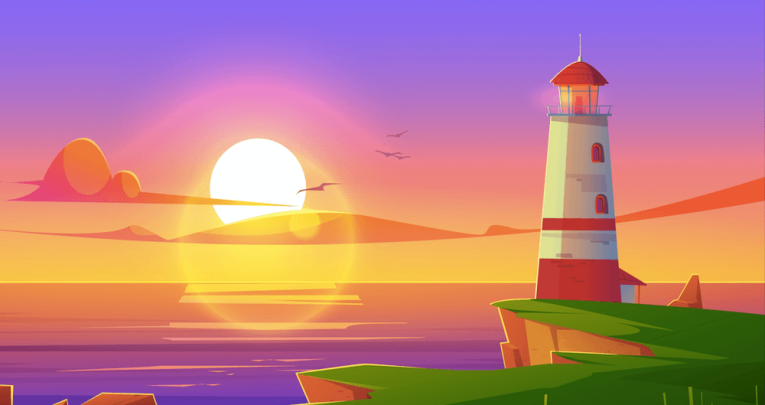
Harness the artists' 'secret code' to help pupils develop a gripping narrative…
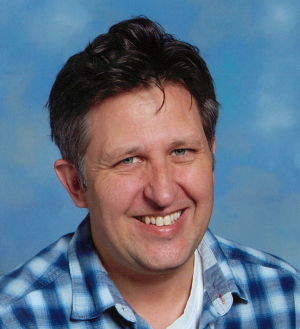
How can we support students to write creatively? It is a great teaching conundrum.
We have all been there: spending hours setting up a stimulating scenario – a story-starter, an intriguing image, a dramatic moment – in the hope of grabbing the children’s imagination and inspiring them to write a gripping narrative.
Only to sit down later and read something truly depressing like, I walked to the door, I was scared. Then I opened the door and a monster attacked me. I died. Aagh!
It is easy to get frustrated (I know I have) but there is a solution: it is called the dramatic imagination.
The dramatic imagination is the secret code of artists. It is used in literature, film, theatre, art, and music. It is the vocabulary of mood and atmosphere, the language of setting and environment, the magic key to ‘show, not tell’. And we can teach it to children.
What is the dramatic imagination?
There are six dimensions to the dramatic imagination: sound/silence; movement/stillness; darkness/light. You might like to try them yourself.
Imagine standing in a room in an old house. It is night-time, on one side of the room is a paned window, on the other, a single door. Now describe where the light comes from and where it falls in the room. Is it from the moon outside, casting a silver light on the floor? Or a flicking candle on a table near the door?
Describe what sounds you can hear: the wind outside; the creak of the floorboards; the sound of your heart beating? Now take a step towards the door, describe your movement.
Describe the stillness in the room; the darkness; the silence. Now reach out to take hold of the door handle, describe the response from your body, the blood rushing through your veins, the slow movement of your arm, the stiffness of your hand…
How much did you write? If you are like me (and the students who learn how to do this) it will have been a lot. The story hasn’t progressed far, but there is a sense of atmosphere, of building suspense , of fear.
You can imagine it as a film: the music slowly building, the screech of violins, the close-up of the actor’s hand. This is the power of imagination.
We can start using the dramatic imagination as soon as children come to school. In fact, it is one of the great features of the six dimensions that we already use them as a natural part of our teaching whenever we read a book to a class or share a picture.
They are all around us, all the time, the trick is to point them out, and later to teach them explicitly.
How to use it in the classroom
I first did this successfully with a Year 2 class using Ted Hughes’ The Iron Man. I started by writing the six dimensions on a large sheet of paper and asking the students to point them out as we read through the story (projecting the text onto the whiteboard):
The wind sang [sound] through his iron fingers [movement]. His great iron head, shaped like a dustbin but as big as a bedroom, slowly turned to the right [movement] , slowly turned to the left [movement]. His iron ears turned, this way, that way [movement]. He was hearing the sea [sound]. His eyes, like headlamps [light], glowed white, then red, then infrared [light] , searching the sea. Never before had the Iron Man seen the sea.
I then supported the students to use the dimensions in their own writing, first while doing guided writing, and then in independent writing. Giving them feedback such as: “You’ve got a sense of movement and sound here, but where is the stillness and silence?”, it was surprising how quickly the children picked them up and how effectively using them improved their writing.
Later, when I taught Year 6 the effect was quicker still and even more effective.
The dimensions are, in my experience, something children understand intuitively and begin to apply almost as soon as they become competent writers.
They often find joy in using a ‘secret code’ used by expert writers, artists, and filmmakers, and the six dimensions can transform children’s writing, giving them a strategy to move beyond ‘then/and’ stories, as well as providing a vocabulary for teachers to provide practical feedback which the children can use to develop their story-telling skills.
It is exciting to use too, and you’ll have fun incorporating it into your own teaching – teaching as storytelling:
The old house stood alone at the top of the hill, no one had been inside for years. Nothing moved except for the dark figures of animals scurrying across its rotten floorboards, nothing lived in the rooms but shadows filling every corner and every space. The wind and the sun and the rain had not been kind to the house’s paintwork which had once been bright and beautiful, but now lay still on the ground like a pale snow. “Why,” I asked myself, “had I promised to spend a night here, alone?”
Tim Taylor is a freelance teacher, and author of A Beginner’s Guide to Mantle of the Expert . Follow Tim on Twitter @imagineinquiry . Read more about building suspense in writing in KS2 .
Sign up to our newsletter
You'll also receive regular updates from Teachwire with free lesson plans, great new teaching ideas, offers and more. (You can unsubscribe at any time.)
Which sectors are you interested in?
Early Years
Thank you for signing up to our emails!
You might also be interested in...
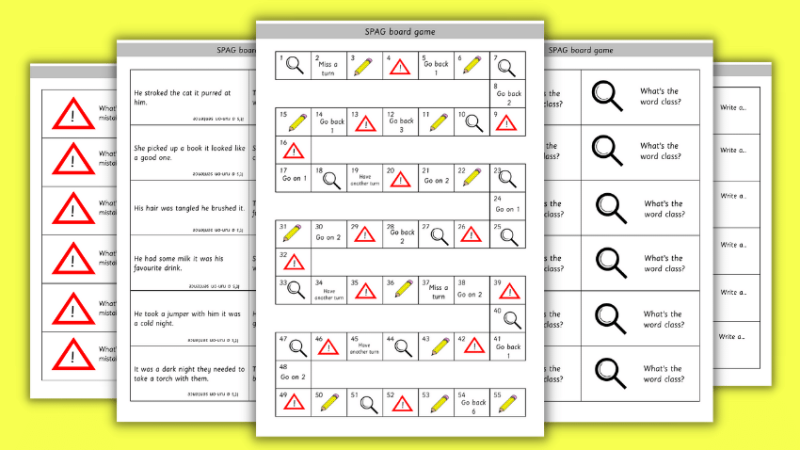
Why join Teachwire?
Get what you need to become a better teacher with unlimited access to exclusive free classroom resources and expert CPD downloads.
Exclusive classroom resource downloads
Free worksheets and lesson plans
CPD downloads, written by experts
Resource packs to supercharge your planning
Special web-only magazine editions
Educational podcasts & resources
Access to free literacy webinars
Newsletters and offers
Create free account
By signing up you agree to our terms and conditions and privacy policy .
Already have an account? Log in here
Thanks, you're almost there
To help us show you teaching resources, downloads and more you’ll love, complete your profile below.
Welcome to Teachwire!
Set up your account.
Lorem ipsum dolor sit amet consectetur adipisicing elit. Commodi nulla quos inventore beatae tenetur.
I would like to receive regular updates from Teachwire with free lesson plans, great new teaching ideas, offers and more. (You can unsubscribe at any time.)
Log in to Teachwire
Not registered with Teachwire? Sign up for free
Reset Password
Remembered your password? Login here

- 0208 088 4514
- [email protected]
10 Summer Holiday Creative Writing Ideas for KS2
by Danielle | Jun 28, 2023 | Blog , Creative Writing | 0 comments

10 Summer Holiday Creative Writing Ideas for Key Stage 2
Here are a few ideas to keep your children writing over the summer holidays! Happy writing!
- My Favourite Summer Memory: Write about your most cherished memory from a past summer holiday. Describe the location, the activities you enjoyed, and the special moments that made it unforgettable.
- A Day at the Beach: Imagine spending a day at the beach. Describe the sights, sounds, and smells of the ocean, as well as the fun activities you might do, such as building sandcastles, swimming, or playing beach games. What might the main event in your story be?
- Exploring Nature: Share an adventure in the great outdoors during the summer. Describe a hike in the woods, a camping trip, or a visit to a national park. Write about the sights you saw, the sounds you heard, and the fascinating creatures you encountered. Did something unusual happen?
- Summer Sports Spectacular: Pick your favourite summer sport or activity, such as swimming, biking, or playing soccer. Write about a thrilling day of practising or competing in your chosen activity, capturing the excitement and sense of achievement. Did anything go wrong?
- Inventive Ice Cream Flavours: Imagine creating your own unique ice cream flavours. Describe your imaginative combinations, from exotic fruits to unconventional toppings, and explain why they would be the perfect treat for a hot summer day. Could you write an advert for these?
- Gardening Adventures: Write about planting and tending to a garden during the summer. Describe the different plants and flowers you grow, the tasks involved, and the joy of watching your garden thrive. Did you find something special in your garden?
- Summer Reading Adventures: Share your reading adventures over the summer. Write book reviews or recommendations for your favourite summer reads and explain why other children should check them out.
- Summer Science Experiments: Describe a fun and exciting science experiment you conducted during the summer. Explain the steps, the materials used, and the fascinating results you observed. Was it what you suspected would happen?
- The Perfect Picnic: Imagine planning and going on a delightful picnic with your family or friends. Describe the location, the delicious food, and the enjoyable activities or games you played. Did it all end well too, or could you have a twist to your story?
- My Dream Summer Adventure: Let your imagination run wild and create a fictional summer adventure. Write a story about an exciting quest, magical encounters, or a remarkable journey to an extraordinary place.
Bright Light Education offer summer holiday creative writing courses ! Head to our course page to find out more.
Don’t forget, Bright Light Education offer a marking service , so if you’d like to get your child’s work marked, then please don’t hesitate to get in touch!

Other Blogposts

What is the Future Stories Community Enterprise?
Feb 15, 2024
What is the Future Stories Community Enterprise? The Future Stories Community Enterprise (FSCE) was established in early 2022 and their aim is to make grammar school entrance examinations both rigorous and yet accessible to all children, including disadvantaged and...

Why should your child join our creative writing courses?
Jan 23, 2024
Children study English often every day at school so why are our creative writing courses so important? In the latest national Key Stage 2 assessment results published in July 2023, 71% of pupils met the expected standard in writing at the end of Key Stage 2, a lower...

What books should my child be reading in 2024?
Jan 1, 2024
Are you stuck for reading book ideas for your child?Here are some ideas to get you going! Reception: Brown Bear, Brown Bear, What Do You See? by Bill Martin JnrWhere’s Spot? by Eric HillThe Very Hungry Caterpillar by Eric CarleClifford the Big Red Dog by Norman...
- International
- Education Jobs
- Schools directory
- Resources Education Jobs Schools directory News Search

My Lunch is Alive! KS2 creative writing resource
Subject: Art and design
Age range: 7-11
Resource type: Lesson (complete)
Last updated
27 April 2018
- Share through email
- Share through twitter
- Share through linkedin
- Share through facebook
- Share through pinterest
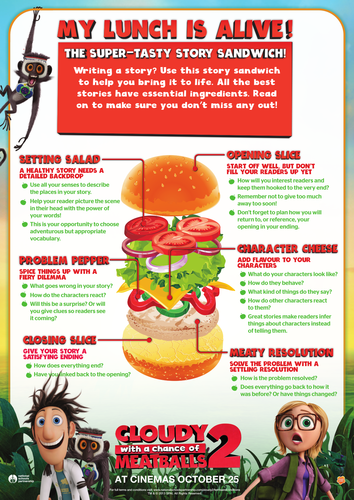
Tes classic free licence
Your rating is required to reflect your happiness.
It's good to leave some feedback.
Something went wrong, please try again later.
What a brilliant free resource...thank you so much for sharing.
Empty reply does not make any sense for the end user
Alina_Doroftei
Hi, Does anyone have an example of a narrative based on this please?
Claireabell2012
Thank you so much! My student and I really enjoyed completing this.
Thanks for sharing.
A fabulous set of lessons. Thank you!
Report this resource to let us know if it violates our terms and conditions. Our customer service team will review your report and will be in touch.
Not quite what you were looking for? Search by keyword to find the right resource:

IMAGES
COMMENTS
You can find 48 creative writing tasks with picture prompts in these ppts. Unlike technical, academic, and other forms of writing, creative writing fosters imagination and allows students to have a voice. Therefore, it is one of the most effective ways to enhance creativity in the classroom.
Celebrate World Book Day in this fun and interactive KS2 guide from BBC Bitesize. KS2 English Creative writing learning resources for adults, children, parents and teachers.
Here, you can explore our fantastic range of English creative writing KS2 resources and creative writing for KS2 worksheets for inspiring young writers!
Learn how to write a story with this lesson for children aged 7 to 11 from BBC Bitesize - The Regenerators.
We explore ten creative writing activities for KS2 teachers and learners. From character interviews and picture prompts to poetry in motion and comic strip capers, these activities will ignite pupils' imagination and improve their writing skills.
Whether you're looking to celebrate World Creative Writing Month or simply to inspire your KS2 children to create some amazing writing, our wonderful creative writing lesson plan KS2 is just the resource for you! This great pack lets you teach a variety of creative writing topics, helping students engage with the subject through our exciting and beautifully designed resources. No matter how ...
Writing skills - creative and narrative writing. Part of English Writing skills. Imaginative or creative writing absorbs readers in an entertaining way. To succeed with this kind of writing you ...
Tes primary English resources has an unrivalled range of teaching ideas for creative writing activities. Breathe new life into your lesson plans for KS1 and KS2 with our resources and materials, including: And that's just the beginning! All Tes primary teaching resources are created by teachers, for teachers and have been successfully tried and ...
A number of ideas which can be used as a stimulus for creative writing lessons.
Prompts for creative writing. This free PDF features a range of classroom games, ideas and prompts for creative writing from The National Literacy Trust. The activities can be completed independently, in pairs or in small groups. They're perfect for National Writing Day.
There are 40 different creative writing prompts, ideal for printing and making into laminated cards, for your students to pick out which one inspires them the most. Each colourful prompt is a short opening paragraph designed to excite young writers and engage them to complete what happens next. With a wide variety of settings and characters, all the paragraphs end on a cliffhanger, leaving ...
Powerpoint and worksheets for KS2 creative writing lessons. The tasks are designed to help students improve their creative writing. There is a task on developing characters, writing dialogue, describing emotions and describing setting.
However, on occasion creativity can be hard to come by and story writing lessons might not produce the outcomes you were hoping for. To help you combat this, here are some techniques and ideas to help you inspire your class with creative writing tasks.
Use this brilliant PowerPoint of Creative Writing club ideas KS2 to teach children character development, persuasive writing, description of place, and more.
Creative Writing Story Prompts. £4.00. (4) KS2 (Key Stage 2) or early KS3 imaginative / descriptive writing story starters cards, featuring high quality photo prompts, vocabulary banks, prompt questions and more. These 20 full-page story generators can be used across a range of abilities and ages, especially in Year 4, 5, 6 and 7 (Y4 / Y5 / ...
Use these brilliant Writing Ideas for KS2 to prompt creative writing within your kids each and every day. A PowerPoint perfect for starter activities.
Here you will find some great creative writing lesson ideas for children. Help young writers find their voice with these fantastic tips, tricks and resources!
Switch to our new English teaching resources Slide decks, worksheets, quizzes and lesson planning guidance designed for your classroom.
This pack includes creative writing advice from Jacqueline Wilson, broken into five sections so you can create your story over a series of lessons. Lesson 1: Big ideas. Lesson 2: creating characters. Lesson 3: the beginning - starting a story. Lesson 4: The middle - making something happen.
Keeping you up-to-date with the latest on education, including great teaching ideas and current issues in education.
An enjoyable and easy-to-manage short story creative writing lesson. This pack is designed for teaching 1-2 English writing lessons at KS2 and is great for developing text structure, grammatical awareness and imaginative language.
10 Summer Holiday Creative Writing Ideas for Key Stage 2. Here are a few ideas to keep your children writing over the summer holidays! Happy writing! My Favourite Summer Memory: Write about your most cherished memory from a past summer holiday. Describe the location, the activities you enjoyed, and the special moments that made it unforgettable.
My Lunch is Alive! KS2 creative writing resource. 4 x fun and flexible creative writing lessons which will excite even the most reluctant writers; fun activities which guide your pupils through the key elements of narrative writing (descriptive settings, developing characters and structuring a story); creative writing competition linked to the ...